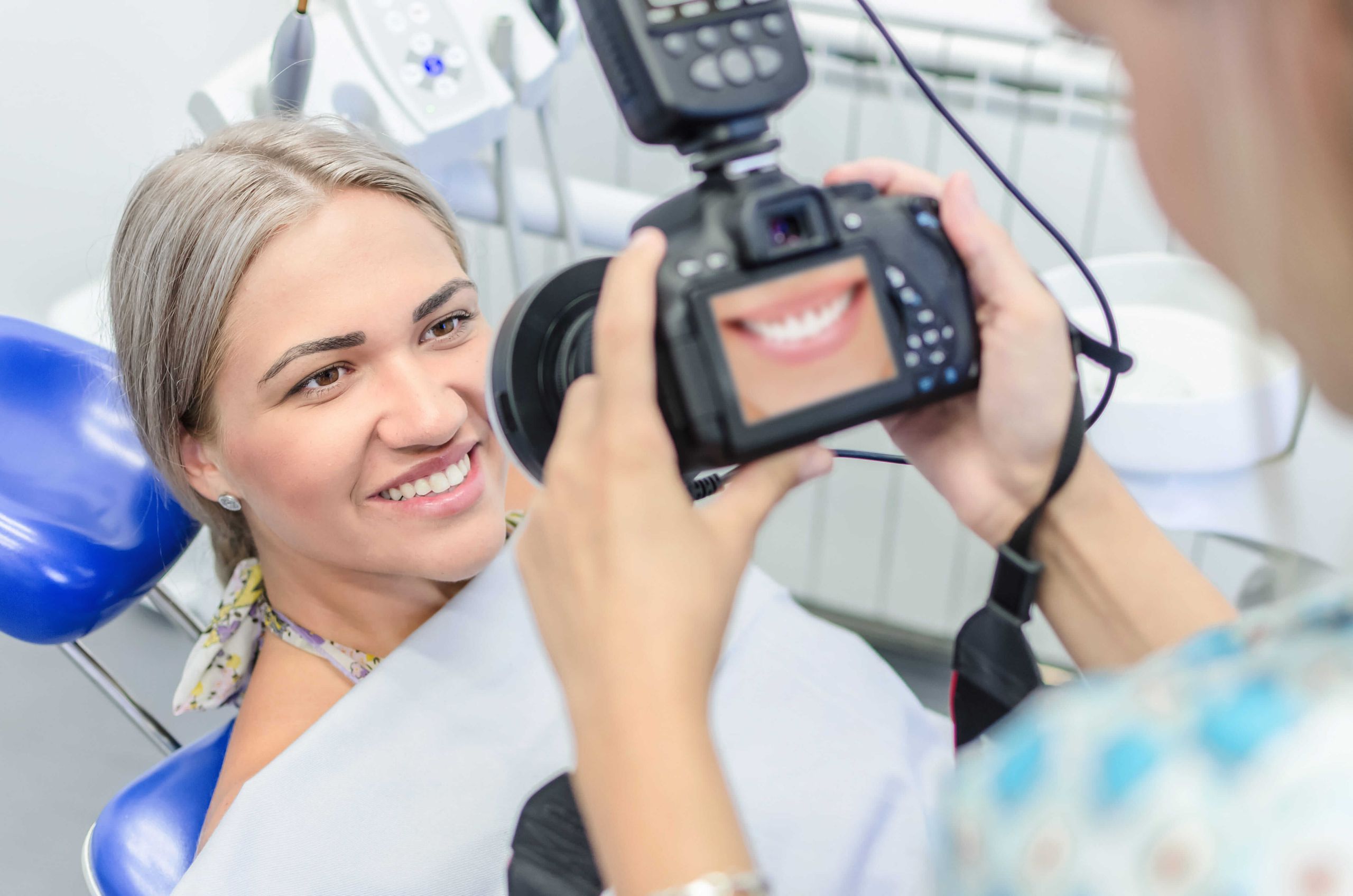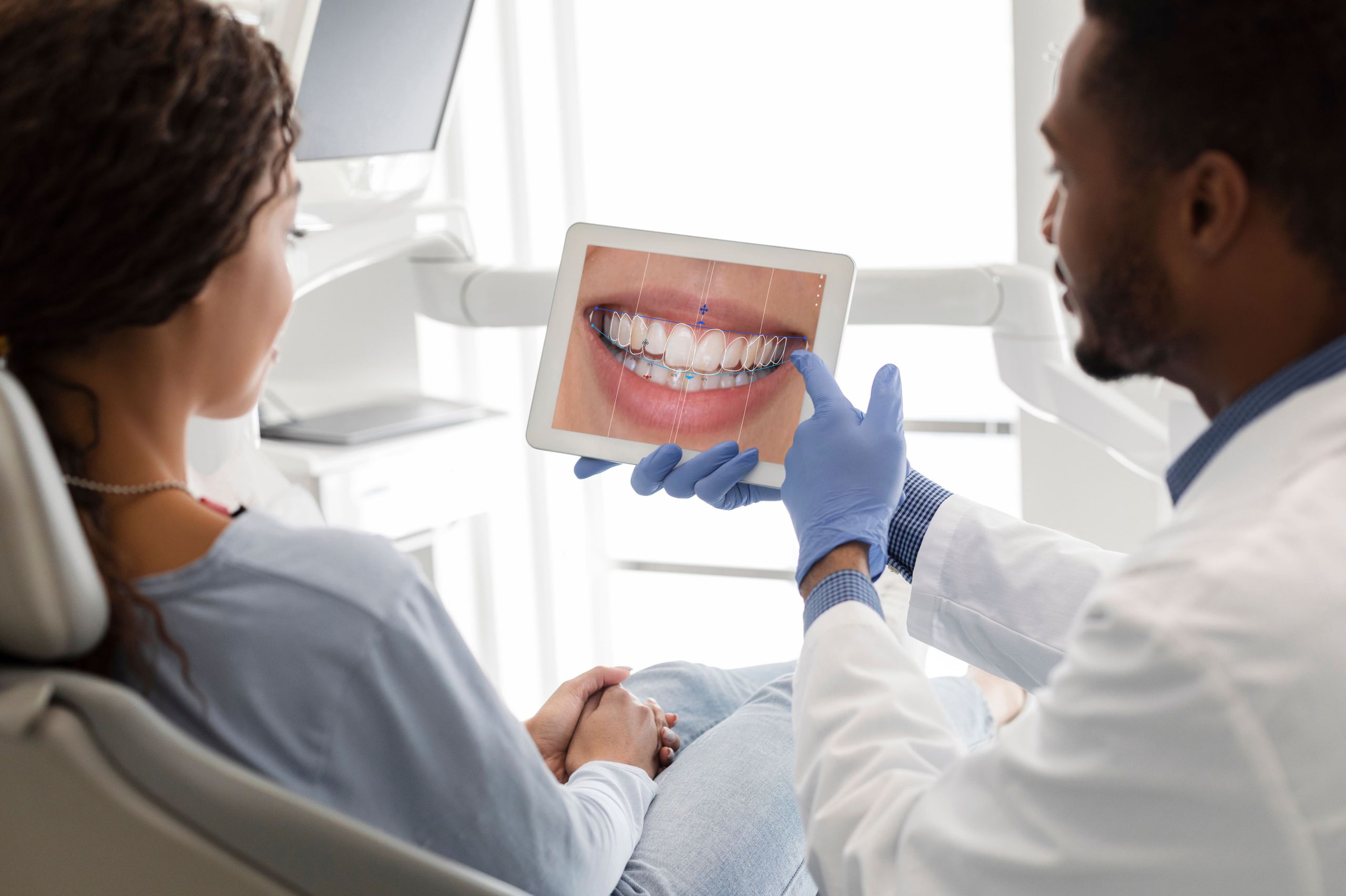- Home
- Blog
- Digital dentistry
- Virtual smile design
Virtual smile design technologies for ultimate patient engagement in digital dentistry
It might be impossible to predict the future but it is possible to predict someone’s future smile. All of this is thanks to virtual smile design solutions. Nowadays digital dentistry solutions come with exciting dental smile design software that visualizes a future smile based on a patient’s scan and photo! Dental treatment communication has never been this engaging.
What is virtual smile designing?
Virtual smile design is the representation of a new and healthy smile on a patient’s photo using dedicated smile design software. With this software, dental treatment will never be the same because in that very first step, where the dentist discusses the plan with the patient, the patient actually has the chance to reflect on the outcome and it can be modified based on their opinion. Virtual smile designing involves photographs, intraoral scans and combines these in design software that simulates a realistic smile — a real-life smile that matches the patient’s facial structure and features. Mind you: this has nothing to do with ‘photoshopping’ a perfect smile; it is a prelude to an actual new smile.

How do smile simulators work?
A picture is worth a thousand words when it comes to a new smile. Digital smile design provides an opportunity for effective communication. Patient and doctor can discuss treatment alternatives already in the consultation process. This type of smile simulator software can be used in any case when a patient is not satisfied with their smile.
There are two things needed for a visualization: an intraoral scan, and a digital picture of their smile. For this picture, it is important that it is static, showing maximum exposure of the teeth.
Also, optional media can be gathered such as retracted or supplemental photos and videos of the patient. Once the data of the patient is gathered and sent to the dental laboratory, the clinician will proceed to begin the patient’s treatment plan, for anything from prophilaxis (preventative treatment), to caries and local irritants removal, restorative work, extractions, or orthodontic treatments. The treatment approach will reflect the patient’s individual needs. Digital smile design software usually works with automatic positioning and can be used for cases of any complexity, for changing one tooth or the entire dentition, and also for changing the patient’s current shade. Here are the most common indications:
- Teeth stains and discoloration.
- Broken and damaged teeth.
- Missing teeth.
- Malpositioned teeth.
- Chip teeth.
- Cracks.
- Diastemas
No matter what type of treatment might be needed for this form of esthetic dentistry, whether it is crowns, bridges, dentures, dental implants, veneers, or orthodontic aligners: it can be visualized in the smile design software before the dentist creates a personal treatment plan.
This type of co-diagnosis between patient and doctor can motivate patients to enroll in treatment. Clinicians can even show their patient photographs of other patients pre and post treatment, to illustrate the outcomes of specific procedures. Photos and images, in this way, can play a vital role in informed consent and treatment acceptance. Patients can make a truly informed decision about their future smile.
What are the benefits of digital smile design software?
Research has shown that digital smile design software is an excellent basis for planning and guiding the desired outcome of dental treatment 1. Zimmermann M, Mehl A. Virtual smile design systems: a current review. Int J Comput Dent. 2015;18(4):303-17. English, German. PMID: 26734665.. Dental software for esthetic treatment planning will completely transform the way esthetic dentistry is functioning: not only the approach to treatment is different, but also communication with patients is much more visual. The programs and tools that are used in digital dentistry have shown to create more trust and interest in patients, which in turn leads to higher case acceptance. For patients, the biggest benefit lies in the ability to dive deeper into processes and influence them.

Benefits for patients
Patients will mostly experience the benefits of virtual design tools before the start of treatment. This period is, after all, the moment in time when they are faced with most questions about the treatment necessary and its duration. Smile simulation software helps the patient connect all the dots. The most important and tangible benefits for patients are the following:
- Naturally-looking visualization of a smile before the treatment begins.
- Tweak the smallest details of your future smile to create the perfect smile.
- Check different possible options for your smile improvement.
- Get your smile in your pocket — receive the visualization on a smartphone via an app and share it with others.
Benefits for doctors
For dentists, the benefit of using a program for digital dental smile design is that they become visual designers by building a smile digitally:
- The workflow is very intuitive and comes with visual guidance and reference. It is fast and easy to create a new smile in just 2-3 minutes.
- Digital design has proven to contribute to long-lasting and accurate fit of the restorations 2. Tsirogiannis P, Reissmann DR, Heydecke G. Evaluation of the marginal fit of single-unit, complete-coverage ceramic restorations fabricated after digital and conventional impressions: A systematic review and meta-analysis. J Prosthet Dent. 2016 Sep;116(3):328-335.e2. doi: 10.1016/j.prosdent.2016.01.028. Epub 2016 Apr 7. PMID: 27061627..
- Fast and simple communication with a patient — there is no need to use imaginative words or descriptions, just show the image on a tablet or laptop.
- It’s easy to share the file with the visual design proposal via a mobile app.
- Digital dental solutions like smile simulators can trigger positive emotions in patients, and help engage and excite them.
Lastly, it is important to note that software for smile design is not only relevant for use in the clinic: labs can also benefit from this type of design preparation. By superimposing the surface scans of an intraoral scanner and aligning it with the 2d photo of the patient, the lab can create a diagnostic waxup, for example. This circular patient-clinic-laboratory communication saves all parties time and eliminates communication gaps by creating predictable treatment outcomes.
Simulate smiles for maximum engagement
Resources
- Zimmermann M, Mehl A. Virtual smile design systems: a current review. Int J Comput Dent. 2015;18(4):303-17. English, German. PMID: 26734665.
- Tsirogiannis P, Reissmann DR, Heydecke G. Evaluation of the marginal fit of single-unit, complete-coverage ceramic restorations fabricated after digital and conventional impressions: A systematic review and meta-analysis. J Prosthet Dent. 2016 Sep;116(3):328-335.e2. doi: 10.1016/j.prosdent.2016.01.028. Epub 2016 Apr 7. PMID: 27061627.